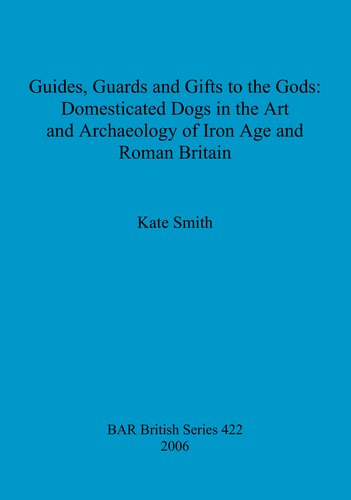

Most ebook files are in PDF format, so you can easily read them using various software such as Foxit Reader or directly on the Google Chrome browser.
Some ebook files are released by publishers in other formats such as .awz, .mobi, .epub, .fb2, etc. You may need to install specific software to read these formats on mobile/PC, such as Calibre.
Please read the tutorial at this link: https://ebookbell.com/faq
We offer FREE conversion to the popular formats you request; however, this may take some time. Therefore, right after payment, please email us, and we will try to provide the service as quickly as possible.
For some exceptional file formats or broken links (if any), please refrain from opening any disputes. Instead, email us first, and we will try to assist within a maximum of 6 hours.
EbookBell Team

0.0
0 reviewsThis study investigates the symbolic role of the domestic dog in Iron Age and Roman Britain through contextual analysis of their faunal remains and interpretation of their representations in iconography. Previous studies have highlighted linkages between the species and ideas about death, healing and regeneration. Although these connections clearly did exist in the cosmologies of Britain and the Western provinces of Rome, this detailed examination of the evidence seeks to identify reasons why this might have been so. The work also highlights previously unnoticed patterns in the dataset that might add a further dimension to our understanding of how the domestic dog was perceived at a symbolic level.It has been established for some time that dogs appear instatistically significant numbers, compared to other species, in the special animal deposits that are a feature of certain Iron Age pits. Dramatic evidence for ritual practice involving animals found at a Romano-British temple complex in Springhead, Kent, and comparable finds from both sacred and secular sites, suggest that domestic dogs were also a favoured sacrifice during this period. As well as analysing such archaeological evidence, this study draws on anthropological, psychological and historical writings about human relationships with the domestic dog in an attempt to forward our understanding of religious expression during antiquity.